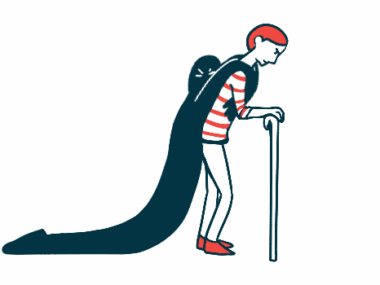hEDS diagnosis brings relief, helps overall well-being, survey says
Most visited several doctors before being diagnosed
Written by |

A survey of adults with hypermobile Ehlers-Danlos syndrome (hEDS) found that receiving a diagnosis led to a sense of relief, helped patients manage their symptoms and prepare for the future, and had a positive impact on their quality of care, support network, and overall well-being.
Still, more than half of the survey respondents visited at least six healthcare professionals before receiving a diagnosis, which underscores “the need for greater awareness among healthcare professionals and patients, as well as further research to identify the root causes of neglect,” the researchers wrote.
The results indicate that “timely diagnosis and enhancing psychosocial well-being while implementing effective treatment strategies could significantly improve patients’ adaptability and long-term outcomes,” they wrote.
The survey was detailed in the study, “Patient experiences of receiving a diagnosis of hypermobile Ehlers–Danlos syndrome,” published in the American Journal of Medical Genetics.
hEDS is the most common type of EDS, marked by symptoms such as hypermobile joints, frequent joint dislocations, scoliosis (sideways curvature of the spine), and soft, smooth, and fragile skin. Because of the wide severity of hEDS symptoms and a lack of biomarkers, patients often experience a long journey before obtaining a diagnosis.
Limited understanding leads to disbelief
Studies suggest that healthcare professionals have a limited understanding of hEDS, which leads to disbelief or hesitancy in evaluating affected patients properly. Similarly, doubts about the condition expressed by friends and family can affect patients’ social and mental well-being.
Although the physical manifestations have been widely discussed, the impact of an hEDS diagnosis on a patient’s psychology and social life has yet to be fully investigated. Researchers in the U.S. designed a survey based on clinical expertise and a literature review to examine the impact of diagnosis on adult hEDS patients.
A total of 81 patients, mostly women (98.8%), ranging in age from 18 to 65, were included in the analysis. Nearly all were white (88%). Most participants lived with family or a partner (85.3%), had private insurance (72.3%), and had a college degree or higher education (96.4%).
Respondents’ average age at symptom onset was 11, though ages ranged from 1 to 41. Twenty-four sought care within the first six months of symptoms, while the remaining patients experienced an average lag time from symptom onset to medical care of 15.7 years.
Average time to diagnosis is 15.9 years
The average time between the first medical evaluation and receiving an hEDS diagnosis was 15.9 years, ranging from immediately after the first assessment to a 65-year delay. Among those who did not seek care within six months of symptom onset, the average diagnostic delay was 19 years.
A majority of patients (61%) visited at least six healthcare professionals before receiving a diagnosis. Patients in older age groups waited significantly longer between the first medical assessment and an hEDS diagnosis than younger patients. There were, however, no differences in the time to seek care from symptom onset across age groups.
Nearly all participants (95.2%) rated receiving a diagnosis as either “important” or “highly important.” About half (54%) reported no change or improvement in their physical health status upon receiving a diagnosis. Most (81.9%) agreed it helped them manage their symptoms, feel more in control (76%), organize long-term care (72%), and mentally prepare for the future (85.5%).
A positive diagnosis led to a sense of relief in most participants (85.6%), though some reported feeling anxious (40.9%) and depressed (13.2%). About one-third expressed anxiety about insurance discrimination (36.1%) and employment discrimination (38.5%).
Participants were asked to rate how they felt their symptoms were acknowledged before and after the hEDS diagnosis on a 5-point Likert scale, with a score of 1 indicating “strongly agree” and 5 reflecting “strongly disagree.” The mean scores before and after diagnosis were significantly different (4.1 vs. 2.2), suggesting that participants “felt that their symptoms were more acknowledged after receiving a diagnosis,” the team wrote.
A sense of isolation and a feeling of being misjudged were significantly lessened after diagnosis, alongside a trend towards a greater interest in social activity. A diagnosis also made it easier for patients to talk about symptoms with their support networks and improved their satisfaction with these discussions while feeling more supported.
“This study demonstrates that receiving a diagnosis could positively impact the patient’s support, quality of care, and overall well-being,” the researchers wrote. The results also demonstrated the “significance of accurate diagnosis in managing complex disorders,” they wrote.
Among the study’s limitations, according to the team, were that it was conducted at a single center and that it had little sociodemographic diversity, meaning it may not be generalizable to the whole hEDS population.







